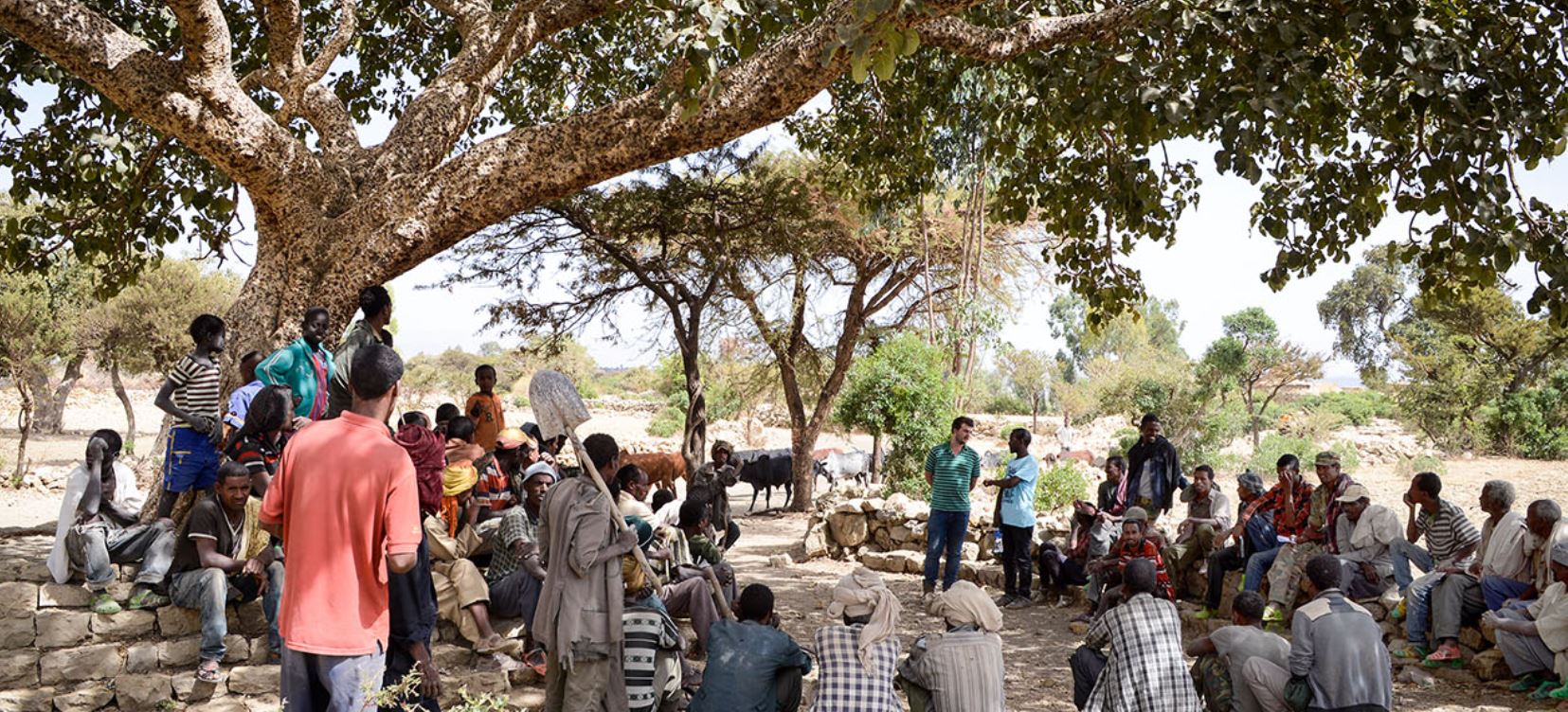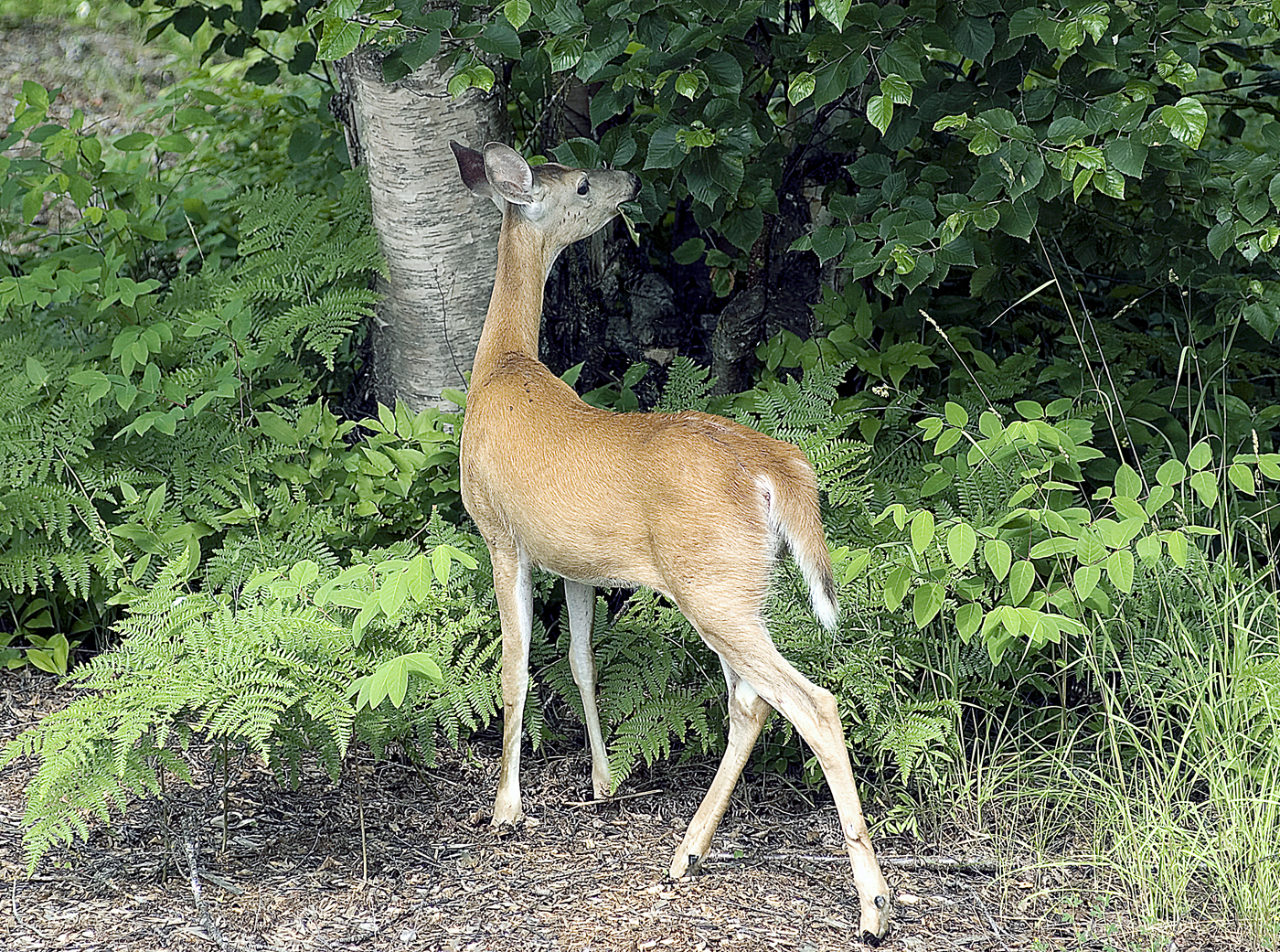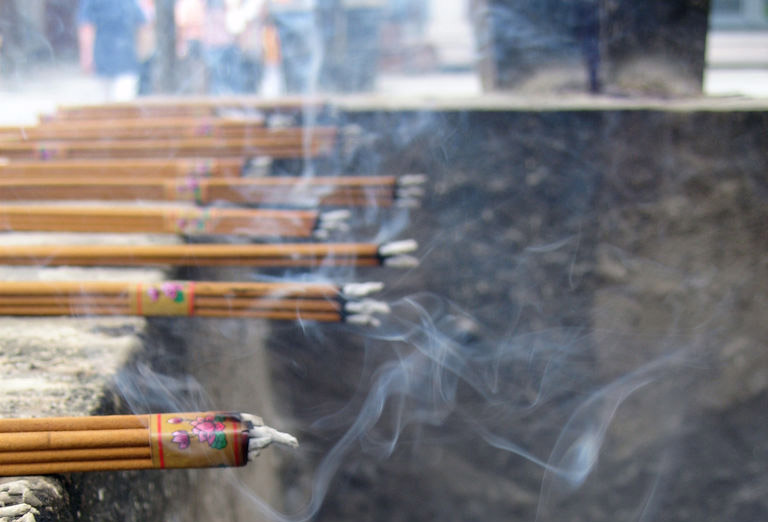|
Exclosure
An exclosure, in an area being used extensively for grazing, is a limited area from which unwanted browsing (herbivory), browsing animals, such as domestic cattle or wildlife such as deer, are excluded by fencing or other means. Environmental protection Most commonly, exclosures are areas that are set aside for regreening. Wood harvesting and livestock range are not allowed there. Effects on environment The establishment of an exclosure has positive effects on: * biodiversity * water infiltration * protection from flooding * sediment deposition * carbon sequestration Economic benefits In developing countries, people commonly have economic benefits from these exclosures through grass harvesting, beekeeping and other non-timber forest products. The local inhabitants also consider it as “land set aside for future generations”. Carbon credits Exclosures have as an additional benefit that the surrounding communities may receive carbon credits for the Carbon sequestratio ... [...More Info...] [...Related Items...] OR: [Wikipedia] [Google] [Baidu] |
EthioTrees
The EthioTrees Ecosystem Restoration Association, in short EthioTrees, established in 2016, is a project for environmental rehabilitation and woodland restoration in Dogu’a Tembien (Ethiopia). The association manages exclosures (land protected from grazing) with the intent of improving the ecosystem and sequestering carbon. In 2018, it managed 18 exclosures comprising over 1500 ha. Context For many years, there has been severe land degradation and desertification in Tigray and the area became also impoverished; however, a lot of efforts are done to rehabilitate these semi-arid mountain landscapes. Since 1994, researchers, students, and field assistants have studied the environment of Dogu’a Tembien. To contribute to the ongoing effort for rehabilitation, they initiated development projects that addressed in the first place land conservation, ecosystem services, and livelihood. EthioTrees is one of these projects. Objectives EthioTrees has as objectives: * to enhance comm ... [...More Info...] [...Related Items...] OR: [Wikipedia] [Google] [Baidu] |
Tigray Region
The Tigray Region (or simply Tigray; officially the Tigray National Regional State) is the northernmost Regions of Ethiopia, regional state in Ethiopia. The Tigray Region is the homeland of the Tigrayan, Irob people, Irob and Kunama people. Its capital and largest city is Mekelle. Tigray is the fifth-largest by area, the fourth-most populous, and the fifth-most densely populated of the 11 regional states. Tigray is bordered by Eritrea to the north, the Amhara Region to the south, the Afar Region to the east, and Sudan to the west. Tigray's official language is Tigrinya language, Tigrinya, similar to that of southern Eritrea. The Tigray region had an estimated pre-war population of 7,070,260. The majority of the population (c. 80%) are farmers, contributing 46% to the regional gross domestic product (2009). The highlands have the highest population density, especially in Misraqawi Zone, eastern and Maekelay Zone, central Tigray. The much less densely populated lowlands comprise ... [...More Info...] [...Related Items...] OR: [Wikipedia] [Google] [Baidu] |
Browsing (herbivory)
Browsing is a type of herbivory in which a herbivore (or, more narrowly defined, a folivore) feeds on leaves, soft Shoot (botany), shoots, or fruits of high-growing, generally woody plants such as shrubs. This is contrasted with Grazing (behaviour), grazing, usually associated with animals feeding on grass or other lower vegetations. Alternatively, grazers are animals eating mainly grass, and browsers are animals eating mainly non-grasses, which include both woody and herbaceous Dicotyledon, dicots. In either case, an example of this dichotomy are goats (which are primarily browsers) and Domestic sheep, sheep (which are primarily grazers). Browse The plant material eaten is known as ''browse'' and is in nature taken directly from the plant, though owners of livestock such as goats and deer may cut twigs or branches for feeding to their stock. In temperate regions, owners take browse before leaf fall, then dry and store it as a winter feed supplement. In time of drought, herdsme ... [...More Info...] [...Related Items...] OR: [Wikipedia] [Google] [Baidu] |
Ruba Dirho
Ruba may refer to: People * Máel Ruba (642–722), Irish saint * Ruba Ghazal (born 1977), Canadian politician * Ruba Katrib, American curator * Ruba Nadda (born 1972), Canadian film director Places * Ruba, Belarus * Ruba Parish, Latvia Food * Ullucus, a root vegetable Science * Rubredoxin A Rubredoxin A (RubA) is a protein conserved across all studied oxygenic photoautotrophs. Structure As of March 2015 there was no crystal structure of RubA although a structure of the homologous protein from a cryptomonad was determined using NMR ..., protein component of photosynthesis * ''Ruba'' (fly), a genus of insects in the family Stratiomyidae {{dab ... [...More Info...] [...Related Items...] OR: [Wikipedia] [Google] [Baidu] |
Idaho
Idaho ( ) is a landlocked U.S. state, state in the Pacific Northwest and Mountain states, Mountain West subregions of the Western United States. It borders Montana and Wyoming to the east, Nevada and Utah to the south, and Washington (state), Washington and Oregon to the west; the state shares a small portion of the Canada–United States border to the north with the Canadian province of British Columbia. Idaho's State capital (United States), state capital and largest city is Boise, Idaho, Boise. With an area of , Idaho is the List of U.S. states and territories by area, 14th-largest state by land area. The state has a population of approximately two million people; it ranks as the List of U.S. states and territories by population, 13th-least populous and the List of U.S. states by population density, seventh-least densely populated of the List of US states, 50 U.S. states. For thousands of years, and prior to European colonization, Idaho had been inhabited by Native American ... [...More Info...] [...Related Items...] OR: [Wikipedia] [Google] [Baidu] |
Pahsimeroi River
The Pahsimeroi River is a U.S. Geological Survey. National Hydrography Dataset high-resolution flowline dataThe National Map accessed May 3, 2011 river in Idaho in the United States. It is a tributary of the Salmon River, which in turn is a tributary to the Snake River and Columbia River. Course From its source in Custer County, at the confluence of the West Fork and East Fork headwaters, the Pahsimeroi River flows generally northwest, through the Pahsimeroi Valley, between the Lemhi Range to the east, and the Lost River Range and to the west. The Pahsimeroi River joins the Salmon River near Ellis, Idaho, upriver from Salmon, Idaho. River modification The water of the Pahsimeroi River and its tributaries is used for irrigation agriculture. All of the river's mainstem tributaries are wholly diverted and totally disconnected year round due to diversion for irrigation. [...More Info...] [...Related Items...] OR: [Wikipedia] [Google] [Baidu] |
Bureau Of Land Management
The Bureau of Land Management (BLM) is an agency within the United States Department of the Interior responsible for administering federal lands, U.S. federal lands. Headquartered in Washington, D.C., the BLM oversees more than of land, or one-eighth of the United States's total landmass. The Bureau was created by United States Congress, Congress during the presidency of Harry S. Truman in 1946 by combining two existing agencies: the United States General Land Office and the United States Grazing Service, Grazing Service. The agency manages the federal government's nearly of subsurface Mineral rights, mineral estate located beneath federal, state and private lands severed from their surface rights by the Homestead Act of 1862. Most BLM public lands are located in these 12 Western United States, western states: Alaska, Arizona, California, Colorado, Idaho, Montana, Nevada, New Mexico, Oregon, Utah, Washington (state), Washington and Wyoming. The mission of the BLM is "to susta ... [...More Info...] [...Related Items...] OR: [Wikipedia] [Google] [Baidu] |
Predator Proof Fence
Predation is a biological interaction in which one organism, the predator, kills and eats another organism, its prey. It is one of a family of common feeding behaviours that includes parasitism and micropredation (which usually do not kill the host) and parasitoidism (which always does, eventually). It is distinct from scavenging on dead prey, though many predators also scavenge; it overlaps with herbivory, as seed predators and destructive frugivores are predators. Predation behavior varies significantly depending on the organism. Many predators, especially carnivores, have evolved distinct hunting strategies. Pursuit predation involves the active search for and pursuit of prey, whilst ambush predators instead wait for prey to present an opportunity for capture, and often use stealth or aggressive mimicry. Other predators are opportunistic or omnivorous and only practice predation occasionally. Most obligate carnivores are specialized for hunting. They may have acute se ... [...More Info...] [...Related Items...] OR: [Wikipedia] [Google] [Baidu] |
Ecology
Ecology () is the natural science of the relationships among living organisms and their Natural environment, environment. Ecology considers organisms at the individual, population, community (ecology), community, ecosystem, and biosphere levels. Ecology overlaps with the closely related sciences of biogeography, evolutionary biology, genetics, ethology, and natural history. Ecology is a branch of biology, and is the study of abundance (ecology), abundance, biomass (ecology), biomass, and distribution of organisms in the context of the environment. It encompasses life processes, interactions, and adaptations; movement of materials and energy through living communities; ecological succession, successional development of ecosystems; cooperation, competition, and predation within and between species; and patterns of biodiversity and its effect on ecosystem processes. Ecology has practical applications in fields such as conservation biology, wetland management, natural resource m ... [...More Info...] [...Related Items...] OR: [Wikipedia] [Google] [Baidu] |
Exclusion Plot On Island Saddle , the inclusion of part or all of a ...
Exclusion may refer to: Legal or regulatory * Exclusion zone, a geographic area in which some sanctioning authority prohibits specific activities * Exclusion Crisis and Exclusion Bill, a 17th-century attempt to ensure a Protestant succession in England * Exclusionary rule, a US legal principle Other uses * Social exclusion, state of being socially disadvantaged, marginalized, relegated to the fringe of society, or banished * Diagnosis of exclusion, medical diagnosis by the process of elimination * Expulsion (education), permanent exclusion (i.e., permanent suspension) from a school or university, usually punitively * Clusivity, a linguistic concept See also * Outcast (person) * Transclusion In computer science, transclusion is the inclusion of part or all of an electronic document into one or more other documents by reference via hypertext. Transclusion is usually performed when the referencing document is displayed, and is norma ... [...More Info...] [...Related Items...] OR: [Wikipedia] [Google] [Baidu] |
Incense
Incense is an aromatic biotic material that releases fragrant smoke when burnt. The term is used for either the material or the aroma. Incense is used for aesthetic reasons, religious worship, aromatherapy, meditation, and ceremonial reasons. It may also be used as a simple deodorant or insect repellent. Incense is composed of aromatic plant materials, often combined with essential oils. The forms taken by incense differ with the underlying culture, and have changed with advances in technology and increasing number of uses. Incense can generally be separated into two main types: "indirect-burning" and "direct-burning." Indirect-burning incense (or "non-combustible incense") is not capable of burning on its own, and requires a separate heat source. Direct-burning incense (or "combustible incense") is lit directly by a flame and then fanned or blown out, leaving a glowing ember that smoulders and releases a smoky fragrance. Direct-burning incense is either a paste formed around a ... [...More Info...] [...Related Items...] OR: [Wikipedia] [Google] [Baidu] |
Ethiopia
Ethiopia, officially the Federal Democratic Republic of Ethiopia, is a landlocked country located in the Horn of Africa region of East Africa. It shares borders with Eritrea to the north, Djibouti to the northeast, Somalia to the east, Kenya to the south, South Sudan to the west, and Sudan to the northwest. Ethiopia covers a land area of . , it has around 128 million inhabitants, making it the List of countries and dependencies by population, thirteenth-most populous country in the world, the List of African countries by population, second-most populous in Africa after Nigeria, and the most populous landlocked country on Earth. The national capital and largest city, Addis Ababa, lies several kilometres west of the East African Rift that splits the country into the African Plate, African and Somali Plate, Somali tectonic plates. Early modern human, Anatomically modern humans emerged from modern-day Ethiopia and set out for the Near East and elsewhere in the Middle Paleolithi ... [...More Info...] [...Related Items...] OR: [Wikipedia] [Google] [Baidu] |




